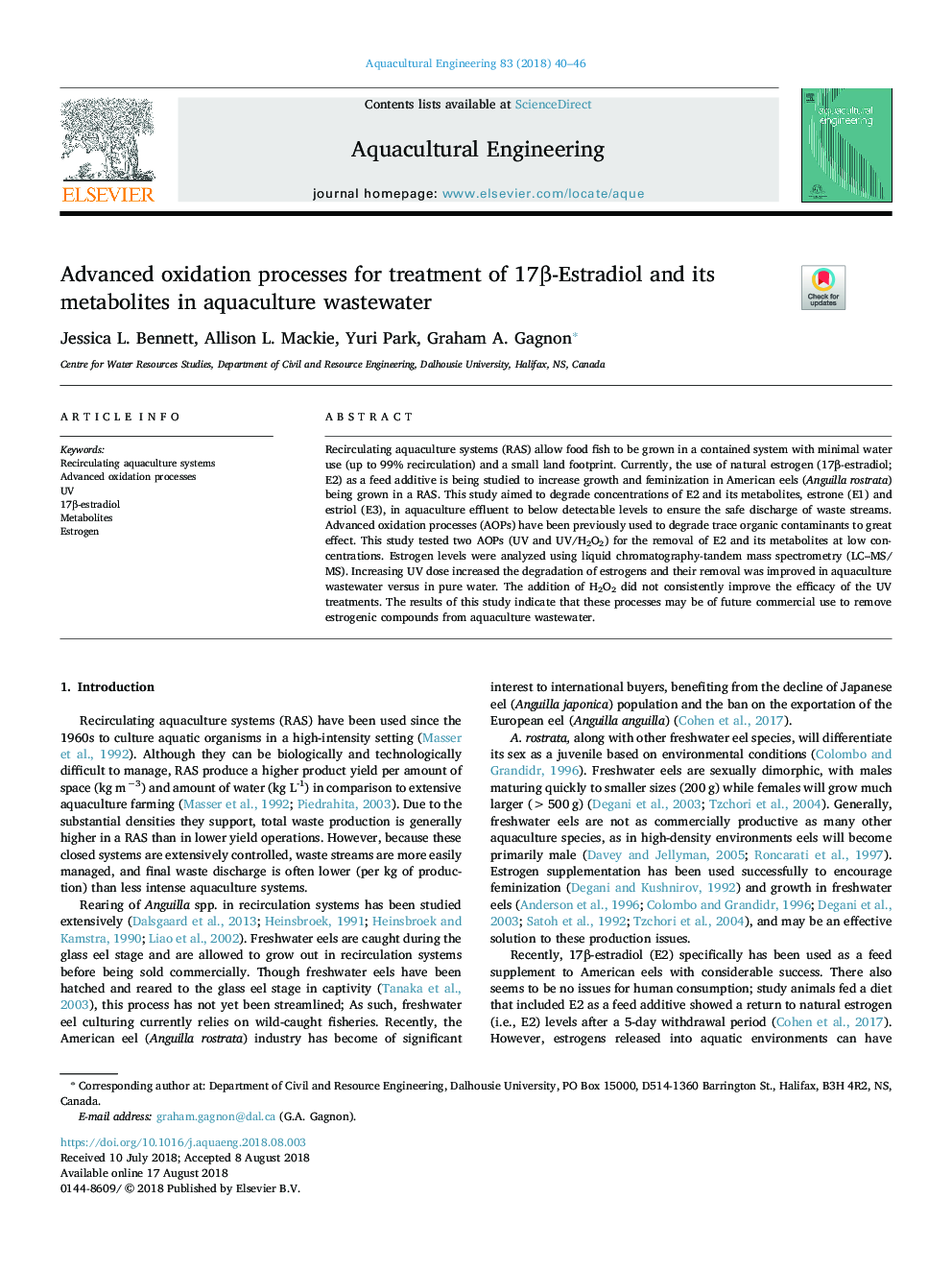| Article ID | Journal | Published Year | Pages | File Type |
|---|---|---|---|---|
| 8883482 | Aquacultural Engineering | 2018 | 7 Pages |
Abstract
Recirculating aquaculture systems (RAS) allow food fish to be grown in a contained system with minimal water use (up to 99% recirculation) and a small land footprint. Currently, the use of natural estrogen (17β-estradiol; E2) as a feed additive is being studied to increase growth and feminization in American eels (Anguilla rostrata) being grown in a RAS. This study aimed to degrade concentrations of E2 and its metabolites, estrone (E1) and estriol (E3), in aquaculture effluent to below detectable levels to ensure the safe discharge of waste streams. Advanced oxidation processes (AOPs) have been previously used to degrade trace organic contaminants to great effect. This study tested two AOPs (UV and UV/H2O2) for the removal of E2 and its metabolites at low concentrations. Estrogen levels were analyzed using liquid chromatography-tandem mass spectrometry (LC-MS/MS). Increasing UV dose increased the degradation of estrogens and their removal was improved in aquaculture wastewater versus in pure water. The addition of H2O2 did not consistently improve the efficacy of the UV treatments. The results of this study indicate that these processes may be of future commercial use to remove estrogenic compounds from aquaculture wastewater.
Keywords
Related Topics
Life Sciences
Agricultural and Biological Sciences
Aquatic Science
Authors
Jessica L. Bennett, Allison L. Mackie, Yuri Park, Graham A. Gagnon,
